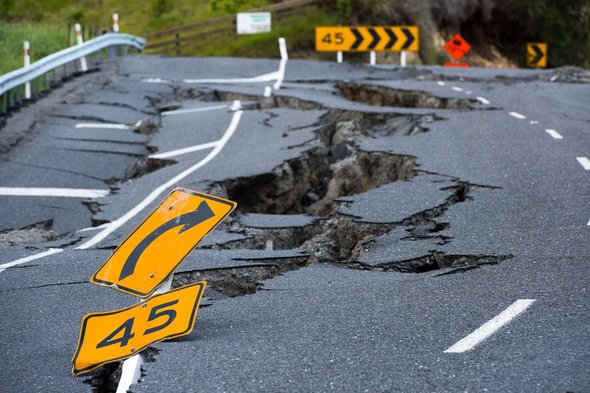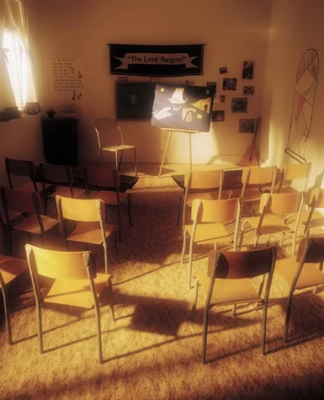I have often wondered why man’s instinct, to fight for life, is so much more than any other animal. He has always wanted to identify the main causes of death and struggle against them. Above all, he is the only creature intelligent enough to do so. Dinosaurs weren’t! The passenger pigeons weren’t. The lions and tigers aren’t still. But what gives man this exceptional power is not something we need to debate on. Because, even today he has not found solutions to so many of those challenges that nature keeps throwing at him.
For instance, does anybody know how to stop earth from shaking? Earthquakes, I mean. The answer is no. Not just that, there are many other nightmarish natural disasters too, which cause vast devastation and take many lives. Floods, tsunamis, drought, storm, earthquake, plague etc are such incidents. Earthquakes are one of the most lethal and dangerous of them and have killed millions of people within the last few centuries. Sometimes, tsunamis are also triggered by earthquakes. The question is – Can we prevent them? But for that, we need to see what earthquakes can really be.
Well, the largest earthquake recorded originated in Chile and shook, to some extent, the entire word. The death toll is not known as whole families were swept into the oceans by waves as high as 35 to 82 feet. Imagine facing death at such a short notice! During the Bhuj earthquake on Republic Day-2001, many children performing a parade were smashed and buried alive by a building, which came down crashing in a few seconds. In short, earthquakes are very treacherous.
This natural calamity, as of now, seems unpreventable. Until the rise of Science, people developed mythological theories or stories as to why everything happened. Most people attributed it, just like other natural disasters, to the anger of God or Devil. And in Japanese mythology, a giant catfish creates an earthquake. However, now only fools believe in such theories as scientific understanding of geology has greatly advanced.
Today, we know that an earthquake is the shaking or trembling of Earth’s surface by seismic activity under the ground. It never lasts more than a few seconds or minutes. Even the one in Chile on 22 May 1960, is mentioned earlier lasted ten minutes. Earthquakes are very much related to another dangerous phenomenon i.e. volcano. Occasionally, earthquakes serve as a warning of impending volcanic eruption. Their region of higher frequency very often coincides. Similarly, earthquakes can also trigger landslides and tsunamis. We just cannot control the Earth.
One exceptional case for study is Japan. It very often is rattled by earthquakes, and of high magnitudes, but it does not suffer much casualty. Why? I think, it’s mostly construction and then, of course, people’s preparedness. What I think needs to be done is improving the quality of construction. Technology should be developed to keep buildings from tumbling down like a pack of cards during earthquakes. Government officials should be appointed to observe that the rules of construction are strictly followed in word and spirit and such officials along with the builders and developers must be further crosschecked and heavily penalized for any possible collusion in wrongdoing. But how do we estimate where an earthquake can take place?
Well, earthquakes have numerous geological reasons but they usually happen due to sudden movements of huge rocky blocks or plates along a fault line deep inside the earth. A fault line is a discontinuity in a mass of rock. When two blocks of rock or plates are rubbing against each other, they don’t slide past softly. Often, they collide at some place because of the unevenness of their surface. At the point of collision, pressure begins building up. At one point, it breaks the rock. Then huge amount of energy is released across the crust. The point of collision is known as the focus and the spot on the surface just above it is called the epicenter of the Earthquake.
By recognizing these fault lines as stated above, we can identify the danger zones and be more careful about them in future.. The buildings there must be lesser in height and be more technologically equipped to handle such an eventuality. By taking care of all these factors, we cannot prevent an earthquake but we may mitigate the losses caused by it. Human life, precious as it is, might be saved. That man has struggled to be infallible is a plain fact but he has still a long way to go before achieving the desired goal. Our struggle against such mysteries of our planet may well be solved one day. We may even be able to predict earthquakes or even prevent them from happening one day, who knows? However, until that time, we need to keep our fingers crossed.

Author Bio : Aniruddha Aloke, 13 years old boy from Virar, India.A participant of International Essay Competition , December,2018.

















